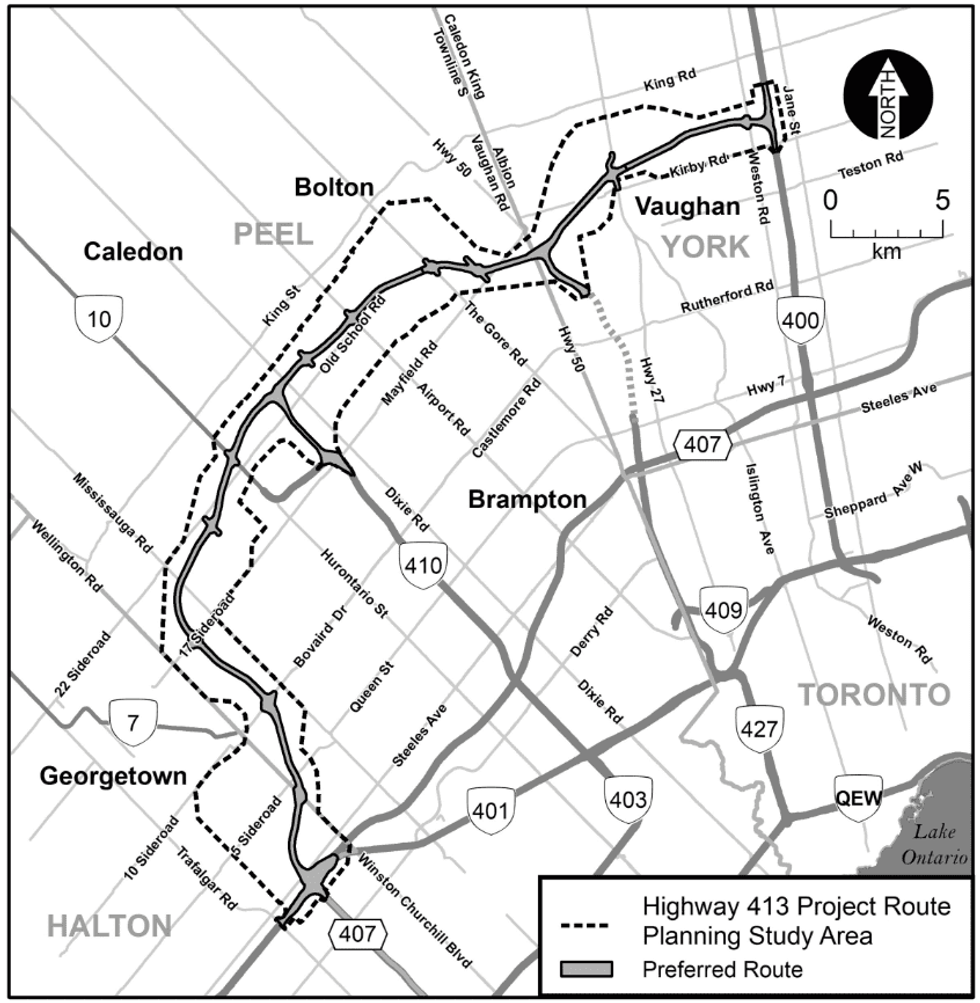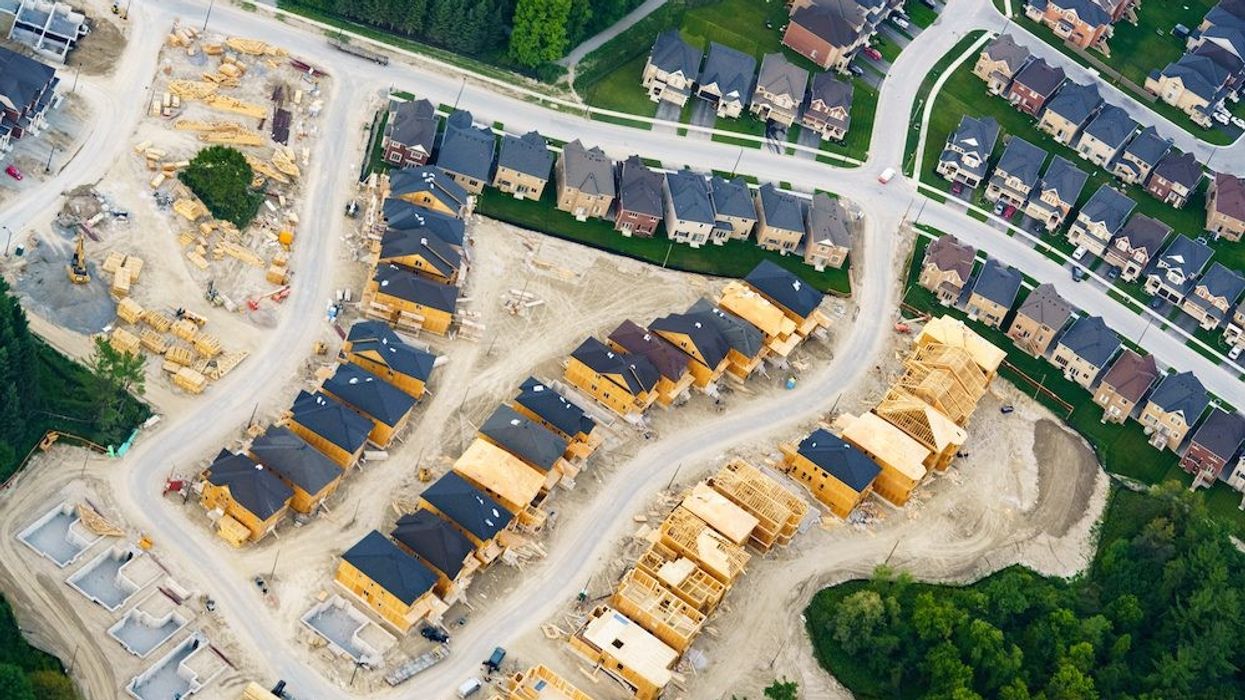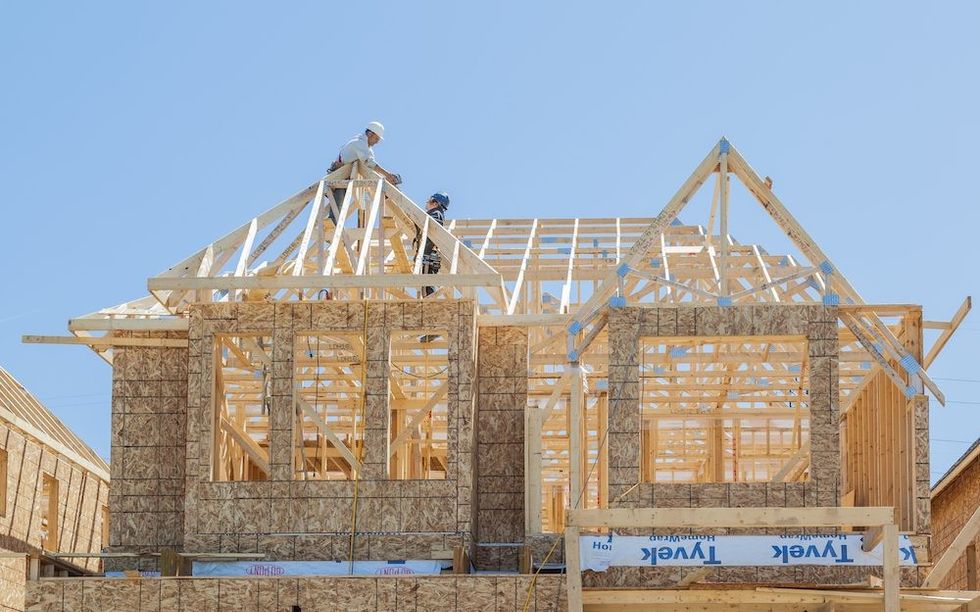The Ontario provincial government presented its 2023 budget to the legislature on Thursday afternoon. Dubbed "Building a Strong Ontario," the nearly 200-page document emphasizes housing and infrastructure investments all across the province, but leaves itself open to questions on how exactly these goals will be met.
For the most part, the budget progresses on previously announced projects, such as the construction of Highway 413 and the redevelopment of Ontario Place. However, a handful of new and exploratory initiatives were also announced, including the possibility of new provincially protected land, which comes as the Doug Ford government looks to remove parts of the protected Greenbelt.
Trying to Find a Way to 1.5M New Homes
Housing was expectedly a major component of the budget, as Ontario residents continue to grapple with an increasingly unaffordable cost of living. To that end, an additional $202M will be given each year to the Homeless Prevention Program and Indigenous Supportive Housing Program to help those experiencing or at risk of homelessness. Of that $202M, a large portion will go to Toronto, said Deputy Finance Minister Greg Orencsak, but a municipal breakdown will be provided at a later date.
For the most part, the budget's housing-related initiatives rallied around the Province's goal of building 1.5M new homes by 2031. The province again took aim at “unnecessary red tape” for slowing down construction, while at the same time highlighting recent initiatives to streamline planning approval processes, including the More Homes Built Faster Act. Questions have already been raised around the feasibility of such a lofty goal, and in the budget, the Province itself notes that Ontario will need roughly 72,000 additional construction workers by 2027 to help deliver its capital plan, which includes the 1.5M homes goal.
"Ontario is facing a historic labour shortage in the construction sector with over 28,000 vacancies in the third quarter of 2022, more than double the number in the same period in 2019," the Province wrote.
In an attempt to combat this, the Province plans to invest $224M in 2023-2024 for a new capital stream of the Skills Development Fund to leverage private-sector expertise and expand training centres, and will invest an additional $25M over three years to the Ontario Immigrant Nominee Program to attract more skilled workers, including in-demand professionals in the skilled trades.
Interestingly, the budget predicts a drop in housing starts in both 2023 and 2024, falling to 80,300 and 79,300, respectively, down significantly from 2022's 96,100 starts. In 2025, Ontario is projecting 82,700 starts, which will creep up slightly to 83,200 in 2026. Combined, this would leave the province more than 1M new homes short of its goal. Orencsak noted, however, that those numbers "don't yet fully include all of the government's future plans."
In an attempt to incentivize development and bolster affordability, the budget calls on the federal government to defer HST on all new large-scale purpose-built rental housing projects. “Ontario would support this measure as it would help spur the construction of more rental housing units while helping to create jobs, encourage economic development and support growth," the province said.
The Province also outlined plans to continue focusing on the development of transit-oriented communities by exploring building partners for future transit stations along new subway lines, such as Corktown, Queen-Spadina, King-Bathurst, and Exhibition stations.
“The Most Ambitious Capital Plan in Ontario’s History”
With more than $184B of planned investments into capital projects over the next 10 years, the Province has dubbed it "the most ambitious capital plan in Ontario's history." Of that total, $20.6B will be spent in the upcoming year.
The projects include the previously announced bridge crossing over the Bradford Bypass, the next phase of construction for the new Highway 7 between Kitchener and Guelph, and the continued widening of Highway 401 from Pickering through Eastern Ontario. Additionally, more than $48B over the next 10 years will be spent on hospital infrastructure to support more than 50 projects, adding 3,000 new beds across the province.
The Province is also moving ahead with plans to build the controversial Highway 413, including in the budget the preferred route for the 52-km highway that will extend from Highway 400, between King Road and Kirby Road, to the 401/407 interchange near Mississauga, Milton, and Halton Hills.

Although spending on highway projects will total $27.9B over the next 10 years, with $2.8B planned for the 2022/2023 year, the budget did not specify how much of the allocated infrastructure funding would go towards Highway 413. According to Orencsak, although some funding has been allocated for the project, a total cost estimate would not be possible until the highway has gone through a procurement process.
The budget reiterated provincial plans to move ahead with the contentious redevelopment of Ontario Place, however no breakdown of costs was provided. And, as tensions remain high following Ford's decision to open up large swaths of the Greenbelt for development, the budget says the Province will continue "protecting southern Ontario’s green spaces by exploring the creation of a new provincial protected area in the Township of Uxbridge.” Orencsak said that the Ministry of Environment, Conservation and Parks is currently exploring options and will be working with Uxbridge on that decision.
The budget also earmarks an additional $14M in 2023-2024 “to expand the Greenlands Conservation Partnership to allow conservation partners to raise matching private-sector contributions to secure new, privately owned natural areas.”
Small Movements on Transit
Over the next 10 years, the Province says it will spend $70.5B on transit, including $6.8B in the 2022/2023 year. The budget included no new transit projects, but focused on continuations of ongoing work, including the Ontario Line Subway, the Scarborough Subway Extension, and the $139.5M purchase of three train sets to reinstate Northlander rail service between Timmins and Toronto. The Province also said it is continuing to work with more municipalities to eliminate "double fares" for most local transit when using GO services.
Although the budget mentions progressing on Light Rail Transit (LRT), no updates were provided on the total cost or an expected opening date of the painfully delayed Eglinton Crosstown LRT in Toronto.
When it comes to private transportation, the Province is re-upping its idea of an Urban Mobility Vehicle pilot program. Previously proposed in 2021, it would allow drivers to operate compact, enclosed, three-wheeled, electric vehicles in participating municipalities. These vehicles, which typically seat one person and don't exceed speeds of 32 km/h, are currently not permitted under the Canadian Motor Vehicle Safety Standards.






















